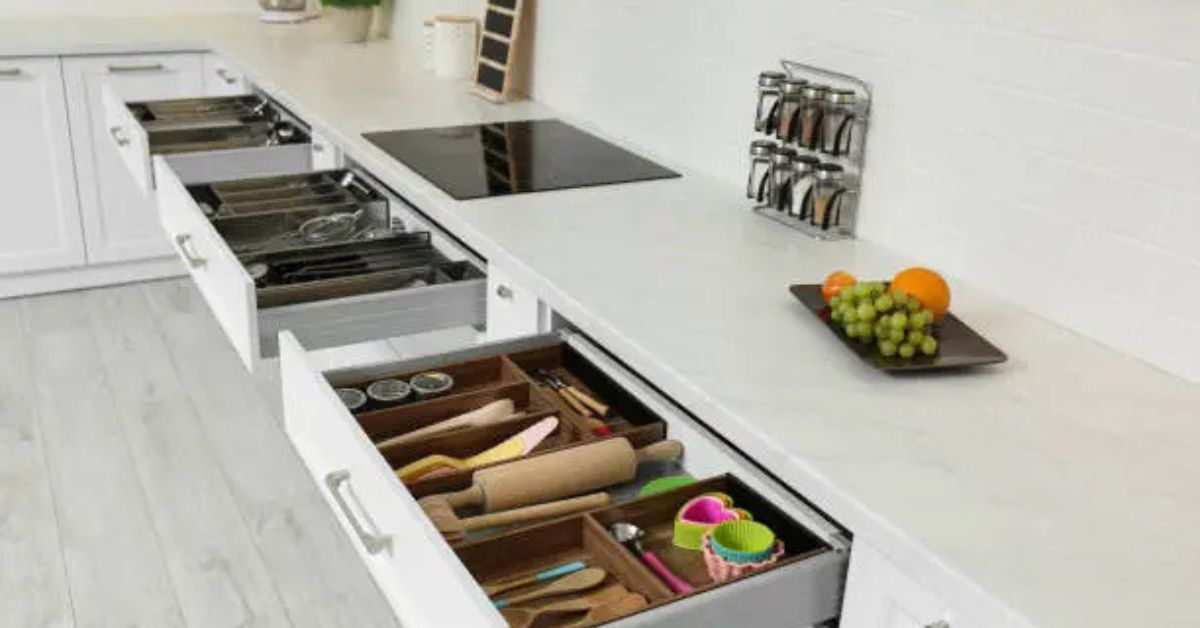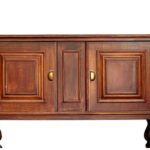A well-organized kitchen is more than just visually appealing; it’s the key to cooking efficiently and reducing daily stress. When your tools are easy to find and your drawers aren’t crammed with clutter, you’re more likely to enjoy meal prep, save time, and avoid unnecessary purchases. Disorganization, on the other hand, leads to duplicate gadgets, wasted cabinet space, and frustration during cooking. Properly organizing and storing your kitchen tools also helps maintain their quality, which means fewer replacements and more reliable performance.
Creating an efficient kitchen organization system doesn’t require an expensive remodel. With the right strategies, you can maximize every inch of space you have, from drawers and cabinets to walls and countertops. Understanding how to categorize, prioritize, and store your utensils and gadgets properly will set the foundation for a smoother, smarter cooking experience.
How to Organize and Store Your Kitchen Tools Efficiently
Streamline your cooking space with simple storage solutions and smart organization tips designed to make your kitchen tools accessible and your workflow smooth.
Categorize Your Kitchen Tools by Function
The first step in kitchen organization is sorting your tools based on how and when you use them. Group similar items together: baking tools, cutting tools, mixing equipment, and food prep gadgets should all have their designated spots. For instance, keep all your measuring spoons, cups, and mixing bowls near your baking area. Similarly, knives, cutting boards, and peelers should be stored close to the food prep zone.
This method allows you to build kitchen “zones” that mirror your cooking habits, so you don’t waste time moving back and forth across the kitchen.
Use Drawer Dividers and Inserts
Drawer clutter can be one of the biggest obstacles to an organized kitchen. Utensils often get jumbled, and it becomes difficult to find what you need when you’re in a hurry. Drawer dividers, trays, and adjustable inserts can help you separate tools by category or size. Consider using expandable dividers to fit any drawer dimension. For smaller items like measuring spoons or vegetable peelers, a sectioned drawer insert will prevent them from getting lost or tangled. Silicone or bamboo inserts are durable, easy to clean, and add a neat, polished look to your drawers.
Hang Tools on Wall Hooks or Pegboards
Vertical storage can dramatically improve your kitchen’s efficiency, especially in small spaces. Installing a pegboard or wall-mounted rail with hooks can transform an empty wall into a functional storage area. Use it to hang ladles, spatulas, whisks, or even pots and pans. This approach not only clears drawer and cabinet space but also keeps your most-used tools within arm’s reach. It’s a favorite trick of professional chefs and home cooks who want easy access to their tools without sacrificing style.
Invest in Pull-Out Cabinets and Lazy Susans
If you’re working with deep cabinets, it’s easy for tools to get lost at the back. Pull-out drawers and rotating trays (Lazy Susans) make it much easier to access everything inside. Install pull-out shelves in lower cabinets for storing small appliances or heavy cookware. Lazy Susans are perfect for storing jars, bottles, and small containers in corner cabinets or pantries. They reduce the need to dig through clutter and help you use every available inch of space.
Designate a Tool Jar or Utensil Holder
Having a large, sturdy utensil holder on the countertop is one of the simplest and most effective storage solutions. Place your most frequently used tools like spatulas, tongs, or wooden spoons in an upright jar near the stove. This keeps your go-to items close at hand while minimizing drawer crowding. Choose a wide container made from ceramic, stainless steel, or heavy-duty plastic to prevent tipping. For added style, coordinate the holder with your kitchen’s decor.
Store Rarely Used Tools Elsewhere
We all have specialty tools that don’t get daily use, cookie cutters, melon ballers, holiday gadgets, and pasta machines. Instead of letting these occupy prime drawer or cabinet space, store them in labeled bins or containers in a higher cabinet, pantry, or storage closet. Labeling is crucial here. Use clear containers or transparent drawers so you can see what’s inside, or use waterproof labels for easy identification. Keeping these items tucked away ensures they’re available when needed, but don’t clutter your daily workspace.
Use Over-the-Door Organizers and Cabinet Racks
Make use of every inch of kitchen space, including the backs of doors and cabinet panels. Over-the-door organizers can hold cutting boards, plastic wrap, aluminum foil, or cleaning supplies. Inside cabinet doors, consider installing hooks or slim racks for pot lids or measuring cups. These organizers are inexpensive and easy to install, yet they can significantly expand your available storage space and reduce countertop clutter.
Rotate and Declutter Regularly
Over time, it’s easy for unused or broken tools to accumulate in the kitchen. Set aside time every few months to review your tool collection. Ask yourself if you’ve used an item within the past six months. If not, consider donating, recycling, or repurposing it. This regular rotation not only frees up space but also keeps your kitchen tools in top condition. Fewer tools mean more room for the ones that matter, and you’ll spend less time digging through clutter.
Maximize Drawer Space with Nested Tools
Choose kitchen tools designed to nest within each other, such as stackable measuring cups, collapsible colanders, or nested mixing bowls. This approach helps conserve valuable drawer and cabinet space without sacrificing functionality. Many brands now offer space-saving designs specifically tailored for small kitchens or minimalists. Investing in such tools can transform your kitchen from chaotic to compact and functional.
Create a Kitchen Tool Inventory
Maintaining an inventory of your kitchen tools may sound excessive, but it’s incredibly helpful, especially for avid home cooks. Use a digital spreadsheet or a printed checklist to categorize your tools by type and frequency of use. This inventory allows you to track what you already own, prevent duplicate purchases, and identify missing essentials. It also makes it easier to reorganize and assess what storage solutions are best for your needs.
Keep Similar Tools Together in Containers or Bins
Inside deep drawers or cabinets, use small plastic or metal bins to group similar tools. For example, keep all baking-related tools in one bin and grilling tools in another. Label each container so you can identify its contents at a glance. This modular approach to storage makes it easier to pull out an entire set of tools at once when needed. It also prevents scattered messes and saves time during cleanup.
Choose Multi-Use Tools Over Single-Use Gadgets
Efficiency in the kitchen also means owning tools that serve more than one purpose. Multi-functional gadgets, like a grater that also slices or a blender that doubles as a food processor, reduce the number of items you need to store. Evaluate your current tools and consider replacing single-use items with versatile options that can handle multiple tasks. This not only frees up space but also improves your overall workflow.
Conclusion
An organized kitchen leads to better cooking experiences, less stress, and smarter spending. When every kitchen tool has a designated place, you waste less time searching and more time enjoying the cooking process. Efficient storage also extends the lifespan of your tools and appliances, keeping your kitchen functional and enjoyable for years to come.
By implementing these storage strategies like grouping tools by function, maximizing drawer space, and decluttering regularly, you can turn even a small kitchen into a model of efficiency. Smart organization isn’t just about aesthetics; it’s a practical step toward a cleaner, calmer, and more effective cooking space.









